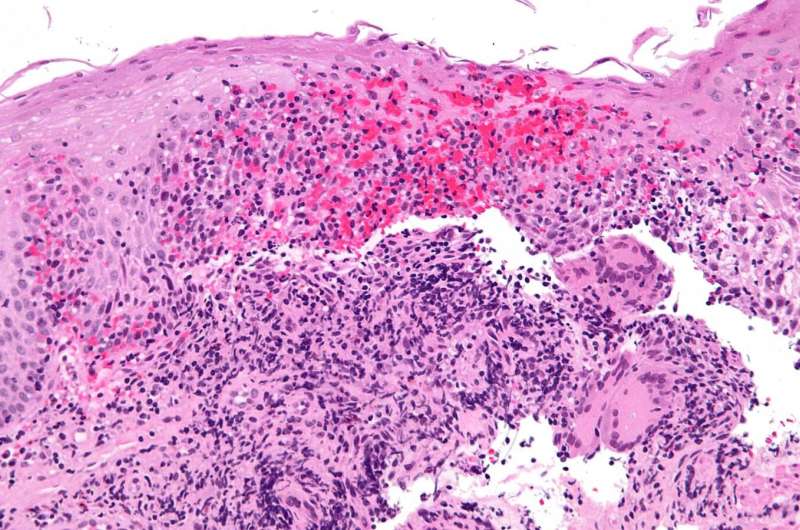Sifting through signs of inflammation to analyze causes of Crohn's disease

When studying Crohn's disease, an inflammatory disorder of the gastrointestinal tract, a challenge is separating out potential causes from the flood of systemic inflammation inherent in the condition. Researchers led by Subra Kugathasan, MD recently published an analysis that digs under signs of inflammation, in an effort to assess possible causes.
Graduate student Hari Somineni, in Kugathasan's lab, teamed up with Emory and Georgia Tech geneticists for a sophisticated approach that may have found some gold nuggets in the inflammatory gravel. The results were published in the journal Gastroenterology.
The group looked at DNA methylation in blood samples from pediatric patients with Crohn's disease, both at diagnosis and after treatment and follow-up. The information came from blood samples from 164 children with Crohn's disease and 74 controls, as part of the RISK study, which is supported by the Crohn's & Colitis Foundation and Kugathasan leads.
"Our study emphasized how important it is to do longitudinal profiling, to look at the patients before and after treatment, rather than just taking a cross section," Somineni says.
DNA methylation is a dynamic process that can influence molecular phenotypes of complex diseases by turning the gene(s) on or off. The researchers observed that disrupted methylation patterns at the time of diagnosis in pediatric Crohn's disease patients returned to those resembling controls following treatment of inflammation.
Kugathasan is Marcus professor of pediatrics and human genetics at Emory University School of Medicine and Children's Healthcare of Atlanta, and director of the Children's Center for Transplantation and Immune-mediated Disorders. Somineni is in the Genetics and Molecular Biology graduate program, with a Ph.D. degree expected in May 2019.
Co-authors include Suresh Venkateswaran Ph.D., Alicia Smith Ph.D., Karen Conneely Ph.D., and David Cutler Ph.D. at Emory; and at Georgia Tech, Greg Gibson Ph.D.
The vast majority of the disease-associated methylation changes in blood "are a transient consequence of inflammation and thus a result of disease," the authors write. "What we're seeing is that treatment of inflammation signatures may fundamentally be treating the symptoms of Crohn's disease rather than the cause." They add: "This may at least partially explain why Crohn's disease often remains a lifelong remitting and relapsing disorder, despite effective treatment of the inflammation symptoms."
Keep in mind: the samples came from the patients' blood, not their intestines. So it makes sense that genes in white blood cells are mainly giving information about the level of systemic inflammation, which is reduced upon successful treatment. Taking samples from intestinal tissue or from immune cells located in the intestine might give a different result, Somineni says.
The researchers employed a "Mendelian randomization" based analysis in order to delineate methylation changes that may contribute to or result from disease. This allowed them to scrub away the inflammation to reveal methylation changes that may underlie disease development; these methylation changes appear to mediate the genetic risk of a known non-coding variant (single nucleotide polymorphism or SNP). Integrating the methylation data with the existing genetic information has pointed to the gene RPS6KA2, encoding ribosomal protein S6 kinase A2 – a gene that Somineni plans to investigate further.
He adds that the analysis was aimed at looking at a complication called stricturing, or narrowing of the intestines due to scarring following inflammation. During the study, 14 participants already had stricturing at diagnosis, and 55 progressed to this form during follow-up. However, the researchers concluded that blood DNA methylation is not a predictor of complications. Again, Somineni says, intestinal tissue samples may be different.
More information: Hari K. Somineni et al. Blood-derived DNA Methylation Signatures of Crohn's Disease and Severity of Intestinal Inflammation, Gastroenterology (2019). DOI: 10.1053/j.gastro.2019.01.270

















